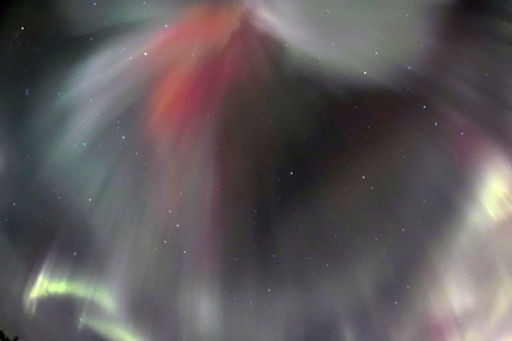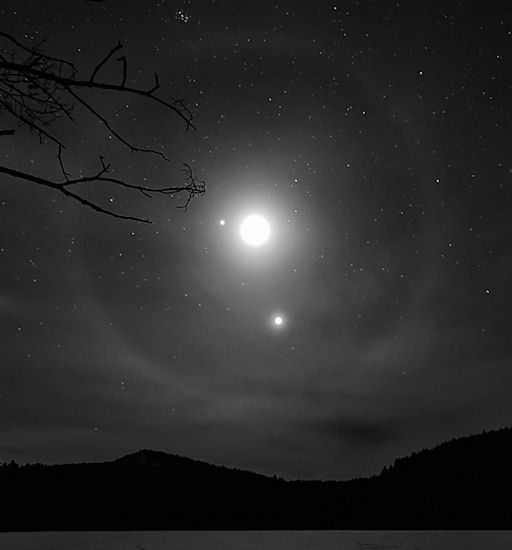AURORA OUTBURST: Last night, for the second night in a row, sky watchers around the Arctic Circle witnessed an impressive display of auroras. "I've never seen anything close to this," says Aaro Kukkohovi, who photographed an eruption of light over Lumijoki, Finland:
"What a fantastic burst of energy--like something blew a hole into Earth's magnetic field just above us!"
HIs rhetorical flourish isn't far wrong. The cause of the display was the interplanetary magnetic field (IMF) tipping south and opening a 'crack' in Earth's magnetosphere. Solar wind poured in and fueled a G1-class geomagnetic storm. This was a high latitude event; the lights were brightest over Scandinavia, Iceland and Greenland.
more images: from Andrei Penescu of Kangerlussuaq, Greenland; from Heikki Mastokangas of Finland, Lestijärvi; from Andy Keen of Inari Municipality, Lapland, Finland; from Jan Pawlowski of Jyvaeskylae, Finland; from Tom Eklund of Valkeakoski, Finland; from B.Art Braafhart of Salla, Finnish-Lapland
February 2012 Aurora Gallery
[previous Februaries: 2011, 2010, 2009, 2008, 2007, 2006, 2004, 2003, 2002]
WEEKEND SKY SHOW: This weekend's triangular conjunction of Venus, Jupiter and the crescent Moon was just as good as advertised. On the beach at Edgecomb Pond in Bolton Landing, New York, amateur astronomer John Cordiale found the bright threesome surrounded by a 22o ice halo:
"I was photographing the alignment when high thin clouds rolled in," says Cordiale. "They threatened to ruin the view, but then this halo encircled Jupiter, Venus and the Moon, framing them perfectly."
As the week unfolds, the Moon will leave Jupiter and Venus behind, but the show isn't over. The two planets are converging for a close encounter on March 12th and 13th--an event so nice it has been described in a NASA news release. Until then, browse the images below.

![]()
Solar wind
speed: 407.4 km/sec
density: 0.7 protons/cm3
explanation | more data
Updated: Today at 1525 UT
![]()
X-ray Solar Flares
6-hr max: B2 0856 UT Feb28
24-hr: B6 0807 UT Feb28
explanation | more data
Updated: Today at: 1500 UT
![]()
![]()
![]()
Daily Sun: 28 Feb 12
![]()
![]()
These sunspots pose no threat for strong flares. Credit: SDO/HMI
![]()
![]()
![]()
Sunspot number: 45
What is the sunspot number?
Updated 27 Feb 2012
Spotless Days
Current Stretch: 0 days
2012 total: 0 days (0%)
2011 total: 2 days (<1%)
2010 total: 51 days (14%)
2009 total: 260 days (71%)
Since 2004: 821 days
Typical Solar Min: 486 days
Updated 27 Feb 2012
The Radio Sun
10.7 cm flux: 106 sfu
explanation | more data
Updated 27 Feb 2012
![]()
![]()
![]()
Current Auroral Oval:
![]()
Switch to: Europe, USA, New Zealand, Antarctica
Credit: NOAA/POES
![]()
![]()
![]()
Planetary K-index
Now: Kp= 1 quiet
24-hr max: Kp= 5 storm
explanation | more data
![]()
Interplanetary Mag. Field
Btotal: 9.1 nT
Bz: 1.4 nT south
explanation | more data
Updated: Today at 1527 UT
![]()
![]()
![]()
Coronal Holes: 28 Feb 12
![]()
![]()
There are no large coronal holes on the Earthside of the sun. Credit: SDO/AIA.






